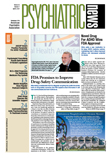The U.S. Food and Drug Administration (FDA) last month ordered manufacturers of sedative/hypnotic medications to add stronger language to their products' labels warning prescribers and patients of the potential for anaphylactic reactions and angioedema. The agency also called for new language warning of the potential for what it calls “complex sleep-related behaviors.”
In addition, the FDA is requiring manufacturers to send “Dear Healthcare Practitioner” letters to prescribers outlining the new warning language. Starting later this year, patients who fill prescriptions for sedative/hypnotic medications will receive a required patient medication guide with each prescription dispensed.
Russel Katz, M.D., director of the FDA's Division of Neurology Products, said during a media conference call that the agency decided to order the new warnings even though the events are “relatively rare” because the events occur to patients who have taken a medication intended to alter their level of consciousness and, as such, the patient may not be able to alert anyone if an event were to occur.
Katz said the actual number of cases reported wasn't available; however, he characterized the reports of anaphylactic reactions and angioedema as having occurred with each of the 13 medications in the sedative/hypnotic category and as possibly totaling as many as “several dozen.”
Katz characterized the reports of “complex sleep-related behaviors” as less common. “We became aware [of these problems] about a year ago, based on reports that were made public, and we went back and looked at all the drugs again,” Katz told reporters.
While not all sedative/hypnotic medications are associated with reports of complex sleep-related behaviors, “we've looked at the entire class and believe that the entire class is capable of producing those events.”
He noted that the FDA had received “a couple dozen” reports of patients “driving, eating, making phone calls, and even having sex” during the middle of the night, while “under the influence of sedative/hypnotic medications.”
It isn't clear, Katz continued, whether the patients characterized in the reports were awake or asleep, but “they were certainly able to engage in complex behaviors such as driving.” The behaviors, he added, aren't simple sleepwalking. “People get out of bed, go get their keys, and they go driving. That's very different from getting out of bed, taking a few steps, and bumping into the wall.”
Katz added that the reports of sleep driving and other sleep behaviors were significantly more common in patients who had taken higher than labeled doses of the medications, and they often combined the medication with alcohol.
Because the adverse-event reports that sparked the new warnings are generated from spontaneous reports to the FDA's Adverse Events Reporting System, it is nearly impossible to estimate how frequently the events may occur. The only certainty, Katz said, is that the number of reports received by the system is lower than the number of events that have actually occurred.
These are the 13 medications required to carry the new warnings:
•
Butisol sodium (generic only)
•
Pentobarbital/carbromal (Carbrital)
•
Zolpidem (Ambien, Ambien CR)
More information on the FDA's warnings on sleep medications is posted at<www.fda.gov/cder/drug/infopage/sedative_hypnotics/default.htm>.▪
